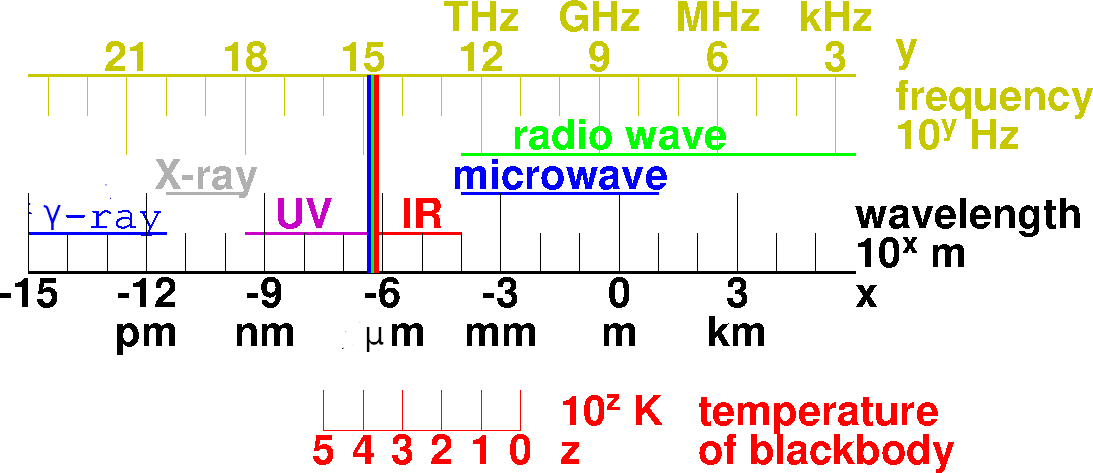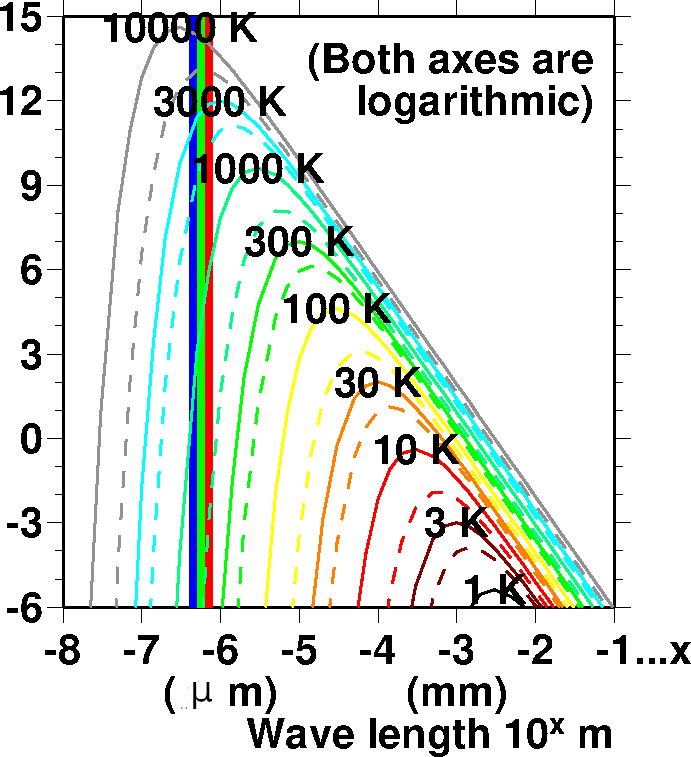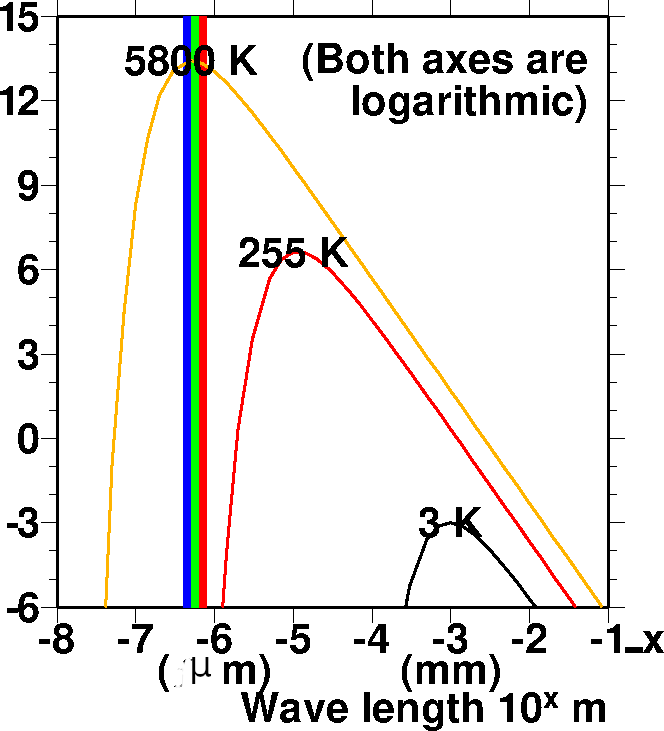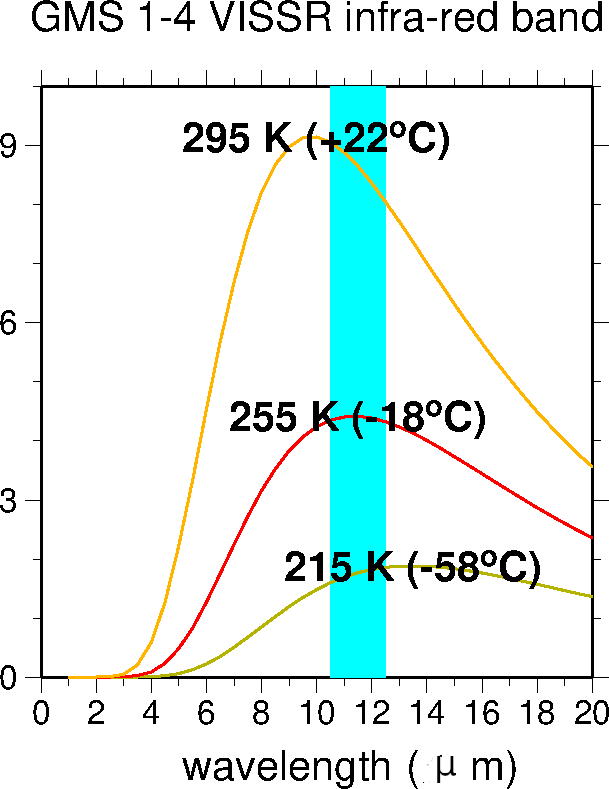Electromagnetic waves
Oscillation and waves
- Oscillation: variation of a certain quantity, repeating at a constant time interval.
- Period: the time interval between the same state. SI unit: second [s].
- Frequency: the reciprocal of "period". SI unit: 1/s = hertz [Hz].
- [Note] The words "period" and "frequency" have special meanings with oscillation and waves.
- Waves: oscillation propagating in space. (Not motion of material bodies.)
- Wavelength: the length from a peak to the next peak. SI unit: metre [m].
- Wavenumber: the reciprocal of "wavelength". SI unit: 1/m .
- Speed of wave = wavelength / period = wavelength × frequency. SI Unit: m/s.
Wavelength and frequency of electromagnetic waves

- Electromagnetic waves are such waves that the variation of electric fields
and that of magnetic fields are conbined.
- λ ν = c ... where λ:wavelength; ν[nu]:frequency; c: speed of light.
- The speed of light in vacuum is one of the fundamental constants of physics.
The value is approximately "7.5 times around the earth" per second.
- The speed of light in air varies with temperature, water vapor content, etc.
But it can be regarded as constant approximately.
- The path of light in vacuum is a straight line according to classical physics.
(It is curved by gravity according to the general theory of relativity.
But, classical physics gives good approximation for everyday life.)
- Electromagnetic waves are also particles called photons.
Energy is transmitted in a lump of h ν, where h is Planck's constant,
and ν is frequency.
- Therefore, electromagnetic waves of shorter wavelength can give
stronger damages to chemical compounds (including such molecules as DNA
that are essential to living organisms).
Interaction of radiation (= electromagnetic waves, photons) and material bodies
- emission ... Photons appear. Energy of the material body decreases.
- absorption ... Photons disappear. Energy of the material body increases.
- scattering ... Direction of photon's motion is changed. Energy of the material body remains the same.
Radiative transfer of energy across a layer of space
- electomagnetic waves that have arrived at the layer can be:
- absorbed ... energy of the matter in the layer increses.
- reflected (or scattered backwards)
- transmitted (or scattered forewards)
- electromagnetic waves emitted by the layer (to both sides) ... energy of the matter in the layer decreases.
Radiative transfer at an opaque surface
- electromagnetic waves arrived at the layer ... α[reflectivity or "albedo"] reflected, (1-α) absorbed
- electromagnetic waves emitted by the layer ... ε[emissivity] × blackbody radiation
- absorptivity (1-α) = emissivity ε [Kirchhoff's Law on radiation], at each wavelength
Blackbody radiation
- Every material body emits radiation according to its temperature and emissivity.
- "Blackbody" is an ideal body whose emissivity is 1 in all wavelengths.
Its absorptivity is also 1 in all wavelengths, so it is ideally black.
- Thermal radiation of a real body is blackbody radiation multiplied
by (wavelength-dependent) emissivity of the body.
- Energy flow of blackbody radiation per unit area of surface per unit time
is proportional to T4, where T is (absolute) temperature.
(Stefan-Boltzmann Law).
The coefficient of proportionality is called Stefan-Boltzmann constant (σB).
Energy spectrum (distribution of energy with respect to wavelength) of blackbody radiation

Note: logarithmic scale in both axis
Peak wavelenth is inversely proportional to temperature. (Wien's Law)

Note: logarithmic scale in both axis

Note: linear (not logarithmic) scale in both axis
2019-May-16
MASUDA Kooiti




